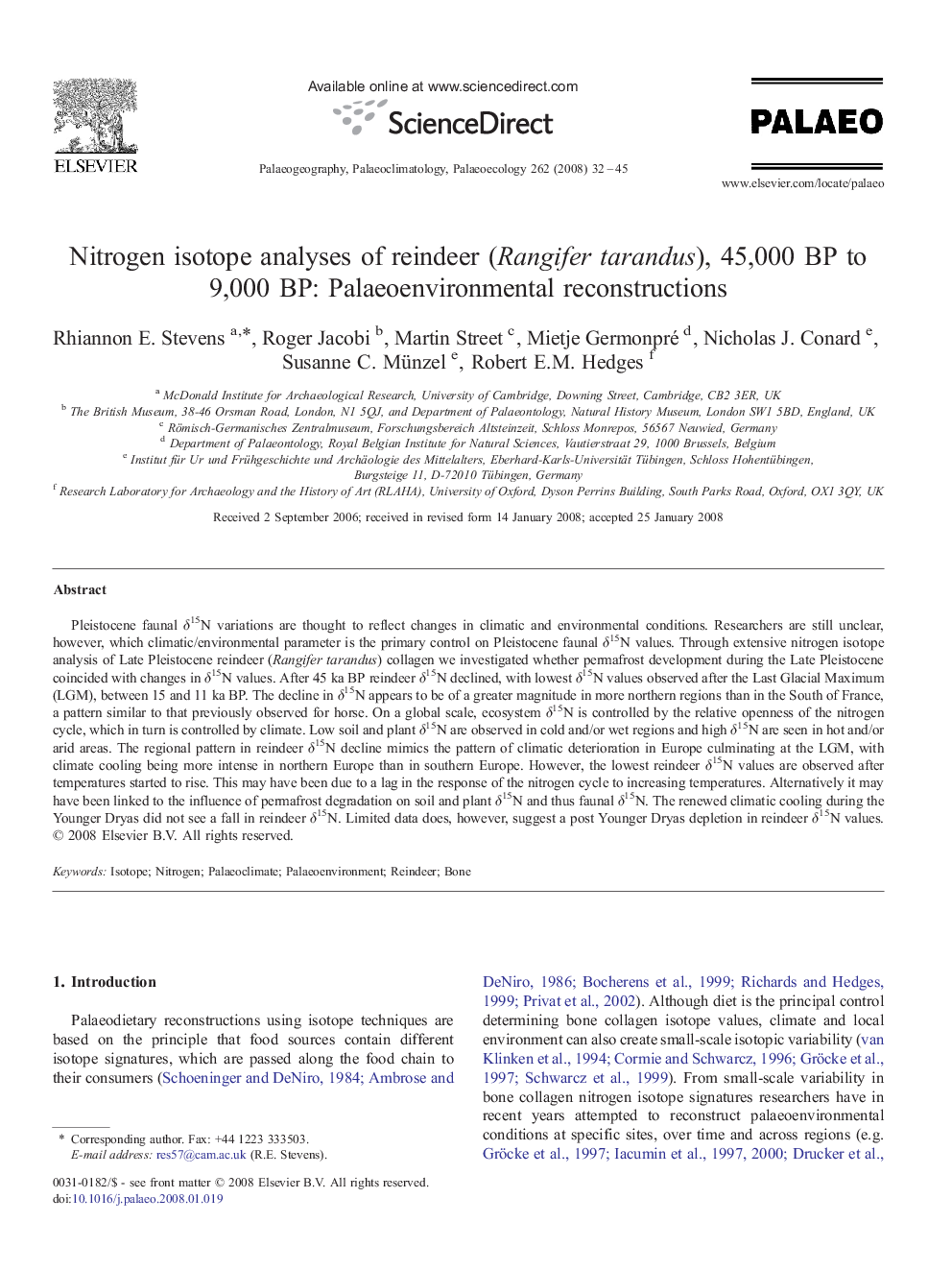| Article ID | Journal | Published Year | Pages | File Type |
|---|---|---|---|---|
| 4468593 | Palaeogeography, Palaeoclimatology, Palaeoecology | 2008 | 14 Pages |
Pleistocene faunal δ15N variations are thought to reflect changes in climatic and environmental conditions. Researchers are still unclear, however, which climatic/environmental parameter is the primary control on Pleistocene faunal δ15N values. Through extensive nitrogen isotope analysis of Late Pleistocene reindeer (Rangifer tarandus) collagen we investigated whether permafrost development during the Late Pleistocene coincided with changes in δ15N values. After 45 ka BP reindeer δ15N declined, with lowest δ15N values observed after the Last Glacial Maximum (LGM), between 15 and 11 ka BP. The decline in δ15N appears to be of a greater magnitude in more northern regions than in the South of France, a pattern similar to that previously observed for horse. On a global scale, ecosystem δ15N is controlled by the relative openness of the nitrogen cycle, which in turn is controlled by climate. Low soil and plant δ15N are observed in cold and/or wet regions and high δ15N are seen in hot and/or arid areas. The regional pattern in reindeer δ15N decline mimics the pattern of climatic deterioration in Europe culminating at the LGM, with climate cooling being more intense in northern Europe than in southern Europe. However, the lowest reindeer δ15N values are observed after temperatures started to rise. This may have been due to a lag in the response of the nitrogen cycle to increasing temperatures. Alternatively it may have been linked to the influence of permafrost degradation on soil and plant δ15N and thus faunal δ15N. The renewed climatic cooling during the Younger Dryas did not see a fall in reindeer δ15N. Limited data does, however, suggest a post Younger Dryas depletion in reindeer δ15N values.
